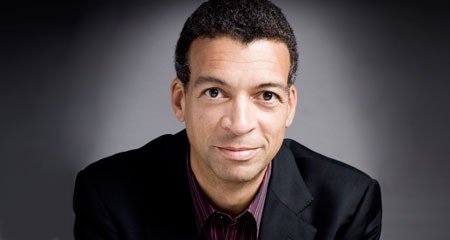Van de Wiel, Philharmonia, Wilson, RFH | reviews, news & interviews
Van de Wiel, Philharmonia, Wilson, RFH
Van de Wiel, Philharmonia, Wilson, RFH
Great moments in Vaughan Williams's mighty 'A Sea Symphony'

Vaughan Williams’s A Sea Symphony, premiered in 1909, is from perhaps the last era in which pieces readily found favour with both critics and audiences alike. It launched Vaughan Williams’s reputation as a major national figure at the age of 38, and has become a favourite of choral societies ever since. But looking beyond its status as a choral warhorse, how does it hold up more than a century after it was written?
At the time it was both following a fashion and striking out in a new direction. The first decade of the 20th century saw a number of major works on the theme of the sea, including those by Elgar, Stanford and Bridge. But Vaughan Williams’s conception of a symphony in which the choir is central to the structure throughout is radical and bold.
'The Wasps' does everything a good overture should and the Philharmonia dispatched it vigorously
It is also a large-scale undertaking: Sunday’s performance at the Royal Festival Hall featured 200 singers, an orchestra of 100, and lasted about 63 minutes (quite sprightly compared with some recordings). I heard Gustavo Dudamel’s band struggling to fill the acoustic last weekend, but these massed forces had no problem, providing some clamorous, stirring climaxes. The orchestra was more refined in the quiet passages, although some of these in turn exposed weaknesses in the choral ensemble.
A Sea Symphony has one of the great openings: a brass fanfare followed by the choir’s “Behold the sea itself”, shifting sideways from B-flat minor to D major. This was delivered thunderously by the combined forces of Bristol Choral Society, Gloucester Choral Society and the comparatively diminutive Philharmonia Voices. But I always feel the rest of the piece fails to quite live up to the promise of those first moments.
There were, no doubt, some terrific passages. The soloists, Roderick Williams (pictured below) and Sally Matthews, were a good match, singing together well in their duets, particularly in the last movement. The choirs had the chance to show off impressive diction and accurate fast singing in the scherzo third movement. And the very ending was exquisite, and held listeners in silent suspense for several minutes, not something easily achieved with a London audience.
 For much of this conductor John Wilson must take credit. He gave clear choral entries and coordinated his forces, despite the large physical distance between him and the choir. The unanimous placing of the final consonant of the first movement exemplified his control. Wilson became less rigid as things went on, and by the last movement he was dancing around the podium as if in one of the Golden Age musicals that are his speciality.
For much of this conductor John Wilson must take credit. He gave clear choral entries and coordinated his forces, despite the large physical distance between him and the choir. The unanimous placing of the final consonant of the first movement exemplified his control. Wilson became less rigid as things went on, and by the last movement he was dancing around the podium as if in one of the Golden Age musicals that are his speciality.
But ultimately perhaps A Sea Symphony is too much of a mighty sledgehammer for my taste, and I prefer the precision tooling of Vaughan Williams’s Overture The Wasps. This does everything a good overture should in just eight joyful minutes, and the Philharmonia dispatched it vigorously. Credit must go in particular to trumpeter Jason Evans and guest principal timpanist Scott Bywater for driving things forward.
It was followed by an excellent reading of Gerald Finzi’s Clarinet Concerto. Increasing age and maturity has made me more tolerant of Finzi: this concerto is much better crafted, and more interesting harmonically, than I might have conceded as a younger man. It had a persuasive advocate in Mark van de Wiel as soloist. The orchestra was strings only (I wondered if it was right to use as many desks for the Finzi as for the Sea Symphony later) and played with a winning uniformity of tone, but I felt van de Wiel had to fight their weight of sound in the loud passages. Elsewhere his rhythmic flexibility made the improvisatory lines float and fly, and he found an eloquence in the first movement's cadenza that was very affecting.
rating
Explore topics
Share this article
The future of Arts Journalism
You can stop theartsdesk.com closing!
We urgently need financing to survive. Our fundraising drive has thus far raised £49,000 but we need to reach £100,000 or we will be forced to close. Please contribute here: https://gofund.me/c3f6033d
And if you can forward this information to anyone who might assist, we’d be grateful.

Subscribe to theartsdesk.com
Thank you for continuing to read our work on theartsdesk.com. For unlimited access to every article in its entirety, including our archive of more than 15,000 pieces, we're asking for £5 per month or £40 per year. We feel it's a very good deal, and hope you do too.
To take a subscription now simply click here.
And if you're looking for that extra gift for a friend or family member, why not treat them to a theartsdesk.com gift subscription?
more Classical music
 From Historical to Hip-Hop, Classically Black Music Festival, Kings Place review - a cluster of impressive stars for the future
From quasi-Mozartian elegance to the gritty humour of a kitchen inspection
From Historical to Hip-Hop, Classically Black Music Festival, Kings Place review - a cluster of impressive stars for the future
From quasi-Mozartian elegance to the gritty humour of a kitchen inspection
 Shibe, LSO, Adès, Barbican review - gaudy and glorious new music alongside serene Sibelius
Adès’s passion makes persuasive case for the music he loves, both new and old
Shibe, LSO, Adès, Barbican review - gaudy and glorious new music alongside serene Sibelius
Adès’s passion makes persuasive case for the music he loves, both new and old
 Anja Mittermüller, Richard Fu, Wigmore Hall review - a glorious hall debut
The Austrian mezzo shines - at the age of 22
Anja Mittermüller, Richard Fu, Wigmore Hall review - a glorious hall debut
The Austrian mezzo shines - at the age of 22
 First Person: clarinettist Oliver Pashley on the new horizons of The Hermes Experiment's latest album
Compositions by members of this unusual quartet feature for the first time
First Person: clarinettist Oliver Pashley on the new horizons of The Hermes Experiment's latest album
Compositions by members of this unusual quartet feature for the first time
 Gesualdo Passione, Les Arts Florissants, Amala Dior Company, Barbican review - inspired collaboration excavates the music's humanity
At times it was like watching an anarchic religious procession
Gesualdo Passione, Les Arts Florissants, Amala Dior Company, Barbican review - inspired collaboration excavates the music's humanity
At times it was like watching an anarchic religious procession
 Classical CDs: Camels, concrete and cabaret
An influential American composer's 90th birthday box, plus British piano concertos and a father-and-son duo
Classical CDs: Camels, concrete and cabaret
An influential American composer's 90th birthday box, plus British piano concertos and a father-and-son duo
 Cockerham, Manchester Camerata, Sheen, Martin Harris Centre, Manchester review - re-enacting the dawn of modernism
Two UK premieres added to three miniatures from a seminal event of January 1914
Cockerham, Manchester Camerata, Sheen, Martin Harris Centre, Manchester review - re-enacting the dawn of modernism
Two UK premieres added to three miniatures from a seminal event of January 1914
 Kempf, Brno Philharmonic, Davies, Bridgewater Hall, Manchester review - European tradition meets American jazz
Bouncing Czechs enjoy their Gershwin and Brubeck alongside Janáček and Dvořák
Kempf, Brno Philharmonic, Davies, Bridgewater Hall, Manchester review - European tradition meets American jazz
Bouncing Czechs enjoy their Gershwin and Brubeck alongside Janáček and Dvořák
 Solomon, OAE, Butt, QEH review - daft Biblical whitewashing with great choruses
Even a top soprano and mezzo can’t make this Handel paean wholly convincing
Solomon, OAE, Butt, QEH review - daft Biblical whitewashing with great choruses
Even a top soprano and mezzo can’t make this Handel paean wholly convincing
 Two-Piano Gala, Kings Place review - shining constellations
London Piano Festival curators and illustrious friends entertain and enlighten
Two-Piano Gala, Kings Place review - shining constellations
London Piano Festival curators and illustrious friends entertain and enlighten
 Echo Vocal Ensemble, Latto, Union Chapel review - eclectic choral programme garlanded with dance
Beautiful singing at the heart of an imaginative and stylistically varied concert
Echo Vocal Ensemble, Latto, Union Chapel review - eclectic choral programme garlanded with dance
Beautiful singing at the heart of an imaginative and stylistically varied concert
 Scott, Irish Baroque Orchestra, Whelan, RIAM, Dublin review - towards a Mozart masterpiece
Characteristic joy and enlightenment from this team, but a valveless horn brings problems
Scott, Irish Baroque Orchestra, Whelan, RIAM, Dublin review - towards a Mozart masterpiece
Characteristic joy and enlightenment from this team, but a valveless horn brings problems

Add comment